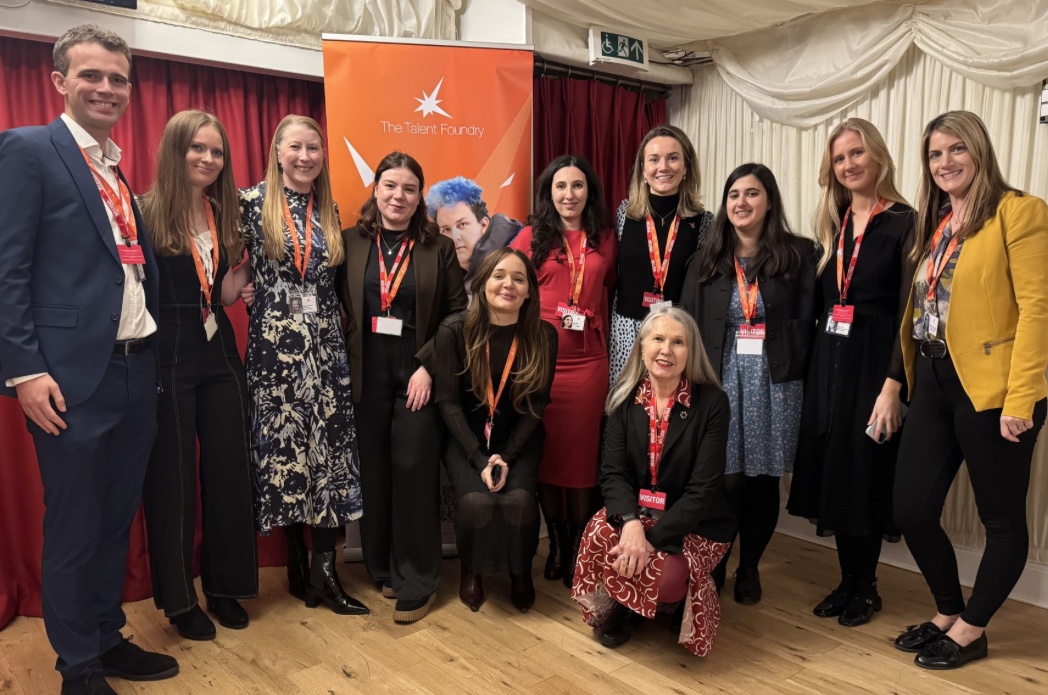27 May 2025 Insights: what is a modern workplace?

In this insights article, our CEO, Jenni Anderson, outlines what hybrid working means at The Talent Foundry.
Our charity exists to support young people have all the information and skills they need for working life, to better prepare them as they make choices throughout education that will affect their futures.
A regular discussion with our partners is what now constitutes a ‘modern’ workplace?
I love finding out what the ‘real world of work’ looks like across the many different industries we work with (yes I’m a hoot at dinner parties); and how the fundamental shift in working arrangements and culture, post-pandemic, is playing out.
Does wfh reduce productivity… what does flexibility really mean… how can a good employer support intergenerational teams… how to create a sense of belonging in remote teams.
This week, my colleague, Cate Smith (our Head of Programmes and Partnerships) shared King’s Business School's Return-to-office mandates: What is at stake for workers, companies, and gender equality? [pdf]
Studies show that flexible workers tend to work longer and harder compared to those who do not work flexibly.
As a charity leader and wanting to be a good human to those in our team, we are continually working through the assumptions posed by the King’s report in our own workplace. I don’t think we’ve cracked it yet, but I do think we have some interesting insights to share.
Our hybrid journey
Post-pandemic, August 2022, we were able to break our lease for a pokey, single toilet, wonky-doored, conducting 121s ‘in the stairwell’, central London office space (you know the type if you’ve had a charity job), barely able to cope with the 11 staff we had at the time.
You can see my bias already for making a fairly quick decision to go ‘remote’. This saved approximately £60k a year from our core cost bill.
I felt this money could be better spent by increasing our staff team, using comfortable, accessible co-working spaces (with good coffee) and putting in place a staff training budget – with change to spare.
At the same time we reviewed our working hours (moving from 40 to 37.5), increased our holiday (from 25 to 28 days) and gave an extra half day for your birthday.
Since then, we’ve evolved our way of working towards a hybrid model.
The TTF meaning of hybrid though is that while we do not have an office, we have a commitment to meet each other in-person whether as a full team once a month at our Team Together Days, or in smaller working groups around specific projects or management responsibilities.
We also believe that the magic of our work happens in the sessions we deliver for young people, so visiting sessions in schools, supporting our network of facilitators, meeting our partners in their offices, attending network, social or partner events is a key commitment.
This is why we are not a fully remote organisation; we value the in-person interactions and endorphins we get from seeing transformation in real life.
Some of the things we have done since we left the London office:
- Our Team Together Days start at 10am and finish at either 15.30 or 16.30. With thanks to our partner SAS, these are held in their London office (and they have great coffee and people there too).
- We have just started finishing at 16.30 on Friday and have an earlier finish every Friday throughout August.
- As we work with schools, we close the ‘office’ for the Christmas break using a mix of additional time off and annual leave.
- We have a variety of online department/whole team check-ins available – a weekly ‘stand-up’, end of week ‘Friyay’ and a fortnightly remote co-working session
- Introduced working groups (wellbeing, impact, youth voice, fundraising) to support people to work together outside of their programmatic responsibilities
- An active Teams channel re-creates the office chat involving Eurovision, sport, music tastes, animals, food options, holiday destinations and great gifs.
Benefits of our hybrid model
- Losing the daily commute gives us time – time for family, fun, friends, fitness, as well as redirecting that time to more purposeful travel to workshops and events
- It has opened the recruitment of new team members from outside London (with some taking the opportunity to move out of London), helping us better represent the nationwide communities we serve
- Individuals take personal responsibility for where in-person would work better over a virtual meeting. And of course, extroverts and introverts need nudging in the opposite direction
- Team socials post our TTDs have included picnics, walking art tours, bauble painting, crazy golf, Sky Garden visits - and we do still have the odd impromptu visit to the pub. [Strangely no one has taken up my idea of heading to the water park for the afternoon].
Other consequences
- Conversely diary management and finding time for in-person activities is challenging – we diarise our TTDs a year in advance to ensure they are prioritised, and staff can secure cheaper advance train fares, reducing commuting costs
- If you are having a tough day, then this may be missed as your colleagues cannot ‘see’ how you are feeling. It is incumbent on all of us to make sure we are actively checking in with others and everyone has to feel comfortable enough to share when they do not feel ok
- Creativity and ideas sharing has to be timetabled, spontaneity can be a little lost
- Getting to know your colleagues, creating a sense of community, delivering inductions and ‘learning the job’ is less organic. It can take longer than if you were in the office sitting next to your colleagues every day, so we have to commit to creating time, structure and space for relationship-building.
We know this isn’t perfect, but I’d love to hear from others what is working for them, or your ideas for enhancing our approach.